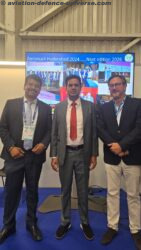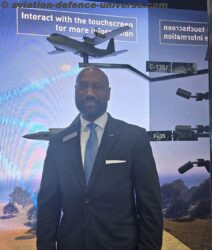North Korea nuclear tests getting more and more worrisome
By Sangeeta Saxena
New Delhi. 11 September 2016. North Korea has tested its fifth nuclear weapon and this time the most powerful in comparison to the ones previously tested. Should it make the world sit up? Isn’t it time the nations together took it as a threat to global security? Is it not high time that the United Nations took this threat from a dictator seriously? Just the time the big-league nations did more than just making statements.
When in 2005 North Korea announced possession of nuclear weapons and its withdrawal from six-party talks aimed at ending its atomic program, the world thought it was trying to flex non-existing muscles.
Came 9 October 2006 01:35:27 KST (9 hrs) Punggye-ri Test Site, North Korea 41.28505°N 129.1084°E, elevation of 1,340 m (4,400 ft) and depth of 310 m (1,020 ft), an underground test conducted by Pyongyang made the world sit up.
And since then 25 May 2009 00:54:43, 12 February 2013 02:57:51, 6 January 2016 01:30:01 and recently 9 September 2016 00:30:01, it has been a progression in the elusive country’s much talked about nuclear program.
In 2006 it was possibly a fizzle in the East Tunnel approximately 1 km NE from the entrance. The Federal Institute for Geosciences and Natural Resources, a state-run geology research institute in Germany, estimated the yield at 2 kilotons back in 2013 but has since revised to 0.7 kt.
In 2009 it was West Tunnel at about 1.2 km NW from the tunnel entrance. The institute in Germany estimated the yield at 13 kt back in 2013 but has since revised to 5.4 kt.
In 2013 likely the test took place in the West Tunnel.The Federal Institute estimated the yield at 40 kilotons back in 2013 but has since revised the yield as 14 kt. The University of Science and Technology of China estimates the yield at around 12.2 kt, with a margin of error of 3.8 kt. Hence the max yield could be 16kT for this test.
This year January test the country claimed to be a hydrogen bomb.Federal Institute originally estimated the yield as 14kT but has since revised to 10kT. For the most recent test on 9th Sepember North Korea announced that this is a successful test of a warhead that can mounted onto rockets. Jeffrey Lewis of the California-based Middlebury Institute of International Studies puts the estimation at 20 to 30 kt. Federal Institute for Geosciences and Natural Resources has initially estimated the yield as 25kT.
The UN Security Council has decided to begin drawing up new sanctions against North Korea after this test and the decision was taken at an urgent meeting of the 15-member council. Pyongyang has carried out two nuclear tests this year despite the UN ban. UN Secretary General Ban Ki-moon said, “I count on the Security Council to remain united and take appropriate action. We must urgently break this accelerating spiral of escalation.”
Incidentally this time its friend and ally China has also said it “firmly opposed” the test. China’s foreign ministry said it would lodge a diplomatic protest. Its not-so friendly neighbours have given strong reactions. Japan said that North Korea is an outlaw nation in the neighbourhood. South Korea in an official statement said such provocation will further accelerate its path to self-destruction. South Korea had earlier accused the North’s leader Kim Jong-un of “maniacal recklessness”.
In its statement the North said it could now produce at will, and as many as it wants, a variety of smaller, lighter and diversified nuclear warheads of higher strike power. But the world knows that more than projecting its power and nuclear technology advancement North Korea is majorly reacting to a US and South Korean plan to install an anti-missile defence system in the South and by the allies’ massive annual joint military exercises. South Korea said that the latest test showed North Korea’s nuclear capability was expanding fast and that North Korean leader Kim was unwilling to alter course.
As per The White House, Office of the Press Secretary in a statement by President Obama US not only condemned the September 9 nuclear test in the strongest possible terms as a grave threat to regional security and to international peace and stability but also reiterated that North Korea stands out as the only country to have tested nuclear weapons this century. “Far from achieving its stated national security and economic development goals, North Korea’s provocative and destabilizing actions have instead served to isolate and impoverish its people through its relentless pursuit of nuclear weapons and ballistic missile capabilities. Today’s nuclear test, a flagrant violation of multiple UN Security Council Resolutions, makes clear North Korea’s disregard for international norms and standards for behavior and demonstrates it has no interest in being a responsible member of the international community,” he said.
He also stated, “last night I returned from the G-20 and East Asia Summit meetings in Asia, where my counterparts and I were united in our call for North Korea to return to the path of denuclearization. Upon hearing the news of the test, I had the opportunity to consult separately via phone with Republic of Korea (ROK) President Park Geun-Hye and Japanese Prime Minister Shinzo Abe. We agreed to work with the UN Security Council, our other Six-Party partners, and the international community to vigorously implement existing measures imposed in previous resolutions, and to take additional significant steps, including new sanctions, to demonstrate to North Korea that there are consequences to its unlawful and dangerous actions. I restated to President Park and Prime Minister Abe the unshakable U.S. commitment to take necessary steps to defend our allies in the region, including through our deployment of a Terminal High Altitude Area Defense (THAAD) battery to the ROK, and the commitment to provide extended deterrence, guaranteed by the full spectrum of U.S. defense capabilities.”
In a war of words a statement read out on the official KCNA news agency said, “The nuclear warhead explosion was a demonstration of our toughest will, showing that we are ready to counter-attack enemies if they make a provocation. It was a part of substantial counter-measures to the threat of a nuclear war and a sanctions racket led by hostile forces, including the US.” In a statement read out on state television, North Korea’s Foreign Minister said , “Its nuclear threat and blackmail constantly imposed on our country were the engine that pushed us to reach this point.”
“Obama is trying hard to deny the DPRK’s (North Korea’s) strategic position as a legitimate nuclear weapons state but it is as foolish an act as trying to eclipse the sun with a palm,” said the statement by a foreign ministry spokesman in Pyongyang, and quoted by the official KCNA news agency.
On 7 March 2013, North Korea threatened the United States with a “pre-emptive nuclear attack”, and Kim Jong-un issued a detailed threat to “wipe out” Baengnyeong Island, the scene of previous naval clashes. North Korea has revealed plans for conducting nuclear strikes on U.S. cities, including Los Angeles, and Washington, D.C. As of March 2016, experts believe North Korea is not yet able to carry out such nuclear strikes on the US: North Korea has rockets strong enough to power ICBMs, and may have miniaturized nuclear warheads compact enough to be delivered by ICBM, but North Korea’s ICBM program probably lacks crucial atmospheric re-entry capability. North Korea probably does possess a dozen or so nuclear weapons. If North Korea has sufficient nuclear warhead miniaturization technology, its Rodong medium-range missiles could probably launch nuclear strikes as far as Japan.
At a plenary meeting of the WPK Central Committee held on 31 March 2013 in the wake of war threats with South Korea, Kim Jong-un announced that North Korea will adopt “a new strategic line on carrying out economic construction and building nuclear armed forces simultaneously”.
In December 2015, in a release from the official KCNA news agency, Kim announced that his country had developed a hydrogen bomb. Kim’s claim is considered unlikely, partly because a hydrogen bomb would be an extremely large and sudden step up in technology for a country that struggled to develop much simpler fission weapons, and partly because no seismic activity consistent with a successful hydrogen bomb test has been observed.
Kim made the claim that his family “turned the DPRK into a powerful nuclear weapons state ready to detonate a self-reliant A-bomb and H-bomb to reliably defend its sovereignty and the dignity of the nation”.
All these statements should no longer be treated as tall claims from an errant boyish leader if a country the world knows nothing much about.
This definitely is a wakeup call for the leader and countries who give directions to the world. UN along with the big five in the nuclear club should start strategizing without much delay. And for the sanctions on North Korea-with China on its side do not make much of a difference. Is it not the time for Plan B to be put into action?




























































































































